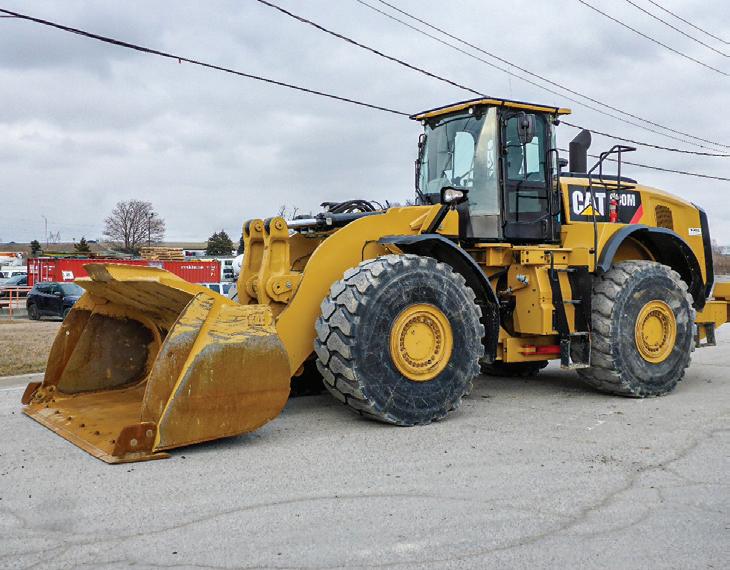construction sector. Aggregate equipment has emerged as a cornerstone of this landscape, offering the tools and technology to streamline operations, reduce expenses, and improve the quality of projects across the city. From crushers and screeners to conveyors and washing equipment, aggregate equipment plays a pivotal role in the production, processing, and transportation of essential materials. Here’s a closer look at how this equipment is helping Winnipeg’s construction sector thrive.
1. Enhancing Project Efficiency
Aggregate equipment in Winnipeg is specifically designed to process, sort, and transport materials like gravel, sand, crushed stone and recycled concrete. Effective material handling is crucial in Winnipeg, where road construction and infrastructure expansion are necessary to fulfill the expanding demands of a dynamic population. By speeding up the process of creating and sorting aggregates, this equipment reduces the time needed to prepare materials for construction, allowing projects to advance faster.
A primary example is the use of crushers, which break down large rocks into manageable pieces. This step is essential for creating quality aggregate materials that meet industry standards. Instead of relying on multiple manual stages to process aggregates, Winnipeg’s contractors can use crushers to perform the task in one swift operation, saving both time and labor.
2. Reducing Operational Costs
Another significant advantage of aggregate equipment is its ability to reduce costs in various ways. First, by automating tasks that would otherwise require more manual labor, aggregate equipment minimizes workforce requirements. This automation not only reduces payroll expenses but also improves worker safety, as it minimizes the need for hands-on interaction with heavy materials.
Equipment such as mobile crushers and screeners also enables contractors to process materials on-site rather than transporting them to a distant facility. Processing aggregates at the worksite reduces transportation expenses, which can be substantial in a large city like Winnipeg, where hauling materials across the city may involve high fuel costs and logistical coordination. Furthermore, by reducing the need for additional transportation, on-site processing also contributes to Winnipeg’s sustainability efforts by minimizing fuel consumption and associated emissions.
3. Improving Material Quality
The quality of aggregate material directly impacts the durability and longevity of construction projects. High-quality aggregates lead to stronger foundations, resilient roads, and lasting infrastructure. Aggregate equipment, such as advanced screeners and wash plants, helps ensure the highest quality materials are used in Winnipeg’s construction projects.
By sorting aggregate according to size, screeners produce consistent materials that are suited to a project’s particular needs. For instance, concrete construction may require certain aggregate sizes to ensure structural integrity, while road bases benefit from well-graded materials that promote compaction. Washing equipment removes impurities, ensuring aggregates meet quality standards. By enabling precise control over material quality, aggregate equipment contributes to the durability and safety of Winnipeg’s construction projects.
4. Supporting Sustainable Construction
With the increasing focus on environmental responsibility, sustainable construction practices are gaining momentum in Winnipeg. Aggregate equipment supports this trend by enabling the recycling of materials, reducing waste, and promoting resource conservation. Concrete and asphalt, for instance, can be broken and recycled into new projects, keeping waste out of landfills and protecting the environment.
Recycling aggregate materials reduces the demand for newly mined materials, which has environmental and economic benefits. Mining for new aggregate consumes energy and can disrupt natural habitats. In contrast, reusing materials helps lessen these impacts, aligning with Winnipeg’s sustainability goals.
5. Boosting Winnipeg’s Economic Growth
As Winnipeg continues to expand, the demand for efficient infrastructure is growing. Aggregate equipment helps local contractors meet these demands cost-effectively, which in turn supports economic growth. When construction companies can complete projects on time and within budget, they are more likely to take on new ventures, contributing to job creation and a robust economy.
Moreover, aggregate equipment suppliers and service providers in Winnipeg benefit from the increased demand for maintenance, repair, and parts, creating a thriving ecosystem that supports the local economy.
6. Overcoming Winnipeg’s Weather Challenges
Winnipeg’s unique weather conditions, characterized by cold winters and hot summers, can be challenging for construction. No matter the weather, aggregate equipment is designed to endure these demanding circumstances and provide reliable performance. Durable, well-maintained equipment reduces downtime due to weather-related wear and tear, enabling projects to stay on schedule even during Winnipeg’s challenging winter months.
Conclusion
Aggregate equipment has become a vital asset for Winnipeg’s construction sector, enabling contractors to streamline operations, reduce costs, and ensure high-quality results. By enhancing project efficiency, reducing operational expenses, improving material quality, supporting sustainable practices, and contributing to the local economy, aggregate equipment plays a key role in Winnipeg’s growth and development. As construction demands continue to rise, investing in advanced aggregate equipment will be crucial for Winnipeg’s contractors, ensuring they can meet future challenges head-on while maintaining competitive costs and minimizing environmental impact.









